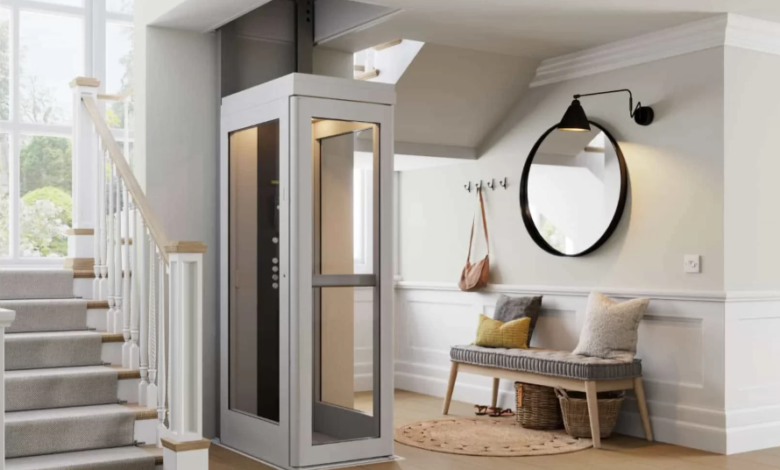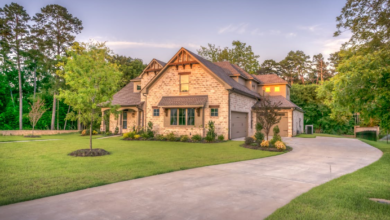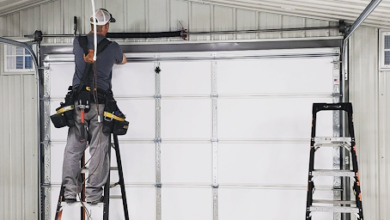How to Choose a Residential Elevator for Your Home

More homeowners are exploring residential elevators as a practical and long-term upgrade that improves accessibility, convenience, and property value. What was once considered a luxury is now becoming a smart investment for families planning to age in place, multilevel homeowners seeking easier mobility, and anyone looking to enhance home functionality. With growing demand, working with an experienced provider like CHS Elevators can help homeowners find safe and reliable installation options tailored to their space and lifestyle.
Unlike commercial lifts, residential elevators are designed to fit seamlessly into existing homes without requiring large mechanical rooms or structural changes. Modern systems come in compact sizes, run quietly, and offer stylish finishes that match interior design. Whether building a new home or retrofitting an older property, choosing the right elevator involves careful planning, understanding available technology, and evaluating safety features before installation begins.
This comprehensive guide explains what homeowners should consider when selecting a residential elevator, including types of systems, space requirements, installation factors, safety standards, maintenance expectations, and cost considerations. By understanding these elements, families can make confident decisions that improve long-term comfort and daily mobility.
Why Homeowners Are Installing Elevators Today
Residential elevators are no longer reserved for luxury estates. They are increasingly common in suburban homes, beach houses, townhomes, and aging-friendly remodels. Several factors are driving this shift:
✅ Aging in place
Many homeowners want to remain in their homes as they grow older. Stairs become challenging, and elevators provide:
Independence without assistanc
Reduced risk of falls
Long-term safety and comfort
Adding an elevator can prevent costly relocations or medical risks later in life.
✅ Multi-level living
Homes with high staircases or raised foundations—especially in coastal areas—benefit significantly from an accessible lift. For households transporting:
Groceries
Luggage
Laundry
Baby strollers
an elevator simplifies daily routines.
✅ Increasing property value
Real estate professionals report that accessible homes appeal to a broader buyer market. A well-installed elevator can:
Differentiate a home from similar listings
Increase resale attractiveness
Support long-term investment value
✅ Convenience for families and guests
Elevators assist children, guests with mobility challenges, and multigenerational households.
Popular Types of Residential Elevators
Choosing a system starts with understanding the main elevator types available today. Each option offers different installation requirements, size capabilities, and performance benefits.
✅ 1. Hydraulic Home Elevators
Hydraulic elevators use a piston powered by a pump to move the cab smoothly between floors.
Advntages:
Quiet operation
Smooth ride
Handles higher weight capacity
Ideal for multiple floors
Considerations:
May require a small machine space
Professional installation needed
Hydraulic systems are popular for long-term durability and comfort.
✅ 2. Machine-Room-Less (MRL) Elevators
MRL elevators operate without a dedicated machine room, saving space.
Benefits include:
Compact design
Energy-efficient traction system
Fits well in existing homes
These are ideal for homeowners who want modern technology with minimal structural changes.
✅ 3. Pneumatic (Vacuum) Elevators
These elevators operate using air pressure and require no shaft or pit.
Key features:
Sleek, cylindrical design
Minimal construction
Excellent for retrofitting small areas
However, they often support fewer passengers and lighter loads.
✅ 4. Shaftless Elevators
Shaftless models connect two floors without a full hoistway.
Advantages include:
Small footprint
Fast installation
Ideal for mobility support
This option is commonly used for aging-in-place upgrades.
See also: How to Choose the Perfect Luxury Furniture for Your Home
Space Planning and Structural Considerations
Before installation, homeowners must evaluate how the elevator will fit into the home layout.
✅ 1. New construction vs. retrofit
Installing during new builds provides maximum flexibility, but retrofits are also common with proper planning.
✅ 2. Hoistway or shaft requirements
Some systems need a full shaft, while others do not. Planning includes:
Floor-to-floor height measurements
Support wall availabilityElectrical access
✅ 3. Pit depth and overhead space
Hydraulic and traction elevators may require a pit, while shaftless or pneumatic options do not.
✅ 4. Location options inside the home
Common placement areas include:
Hallways
Stairwell openings
Closets stacked between floors
Garage entries
Selecting the right location improves convenience and resale value.
Safety Features Every Elevator Should Have
Residential elevators must meet strict safety standards to protect users of all ages.
Essential features include:
✅ Emergency stop controls
✅ Battery backup for power outages
✅ Door interlocks to prevent movement when open
✅ Smooth leveling to prevent tripping
✅ Non-slip flooring
✅ Phone or communication system
Families with children may also request:
Keyed or restricted access
Sensors that prevent door closure
Controlled speed limits
Choosing a certified installer ensures compliance with state and national safety codes.
Understanding Installation Timelines
The installation process varies depending on the home and elevator type.
General steps include:
Site assessment and measurements
Engineering and permitting
Construction preparation
Elevator installation
Final inspection and testing
Typical timelines
Retrofit installations: 4–10 weeks
New construction: varies with home build schedule
Working with experts reduces delays and ensures proper planning from start to finish.
Maintenance Requirements After Installation
Like any mechanical system, elevators need routine care to remain safe and reliable.
✅ Annual inspections
Technicians check:
Electrical systems
Door operation
Hydraulic or traction components
✅ Cleaning and lubrication
Prevents unnecessary wear and noise.
✅ Battery backup replacement
Ensures emergency operation during power loss.
✅ Prompt service for unusual sounds
Early detection prevents expensive repairs.
Routine maintenance keeps the elevator running smoothly for decades.
Cost Factors to Consider
Residential elevator pricing varies widely based on several factors:
Key cost drivers include:
Elevator type and technology
Number of floors
Custom finishes and cab size
Structural adjustments in the home
Permit and inspection requirements
While some homeowners focus only on price, choosing a qualified installer ensures long-term reliability, safety, and support.
Elevators are not a short-term purchase—they are a home investment.
Benefits of Working With a Local Specialist
Choosing a regional expert offers major advantages, especially in areas with coastal construction needs like South Carolina.
Benefits include:
✅ Faster response times
✅ Knowledge of local building codes
✅ Familiarity with foundation and elevation requirements
✅ Better long-term service and support
Professional installers help homeowners select the right system, secure permits, and ensure safe installation from start to finish.
Future Trends in Residential Elevators
Home elevator technology is advancing rapidly, offering more options and improved convenience.
Emerging innovations include:
🔹 Smart monitoring systems
🔹 Energy-efficient motors
🔹 Sleek, frameless door designs
🔹 Compact elevators for small homes
🔹 Custom interior lighting and materials
These upgrades make elevators more functional and visually appealing than ever before.
Conclusion
Installing a residential elevator is one of the most valuable improvements for comfort, accessibility, and long-term living. By understanding elevator types, safety features, space requirements, and maintenance needs, homeowners can make informed decisions that support both lifestyle and property value. For expert guidance and professional home elevator installation in South Carolina and surrounding areas, visit home elevator installation Isle of Palms SC to explore reliable options designed for safety, convenience, and future-ready living.






